The Sámi: some aspects of Nordic research. Рубрика в журнале - Arctic and North
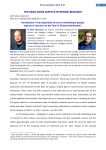
Статья научная
In this special section of journal “Arctic and North” renowned and younger scholars from Finland and Norway take on the topic of research on the Sámi, from the era of “Lappology” to the era of “Sámi research”. The focus in the articles varies between research history, historiography and history of science. Thematically, the articles range from longer overviews of the historical evolution and transformation of “Lappology” in their national settings to more focused articles on individual scholars, as well as an article on Sámi historiography with a methodological approach. Two articles focus on the genesis of more culturally sensitive Sámi research.
Бесплатно
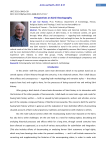
Perspectives on Sámi historiography
Статья научная
The article focuses on Sámi history and historical methods. The main results and central aspects of Sámi history, in its relational context, are gone through. What effects and consequences — regarding both methodology and narrative styles — these aspects have had, and ought to have, for the processes of doing research on and writing Sámi history? The focus is on the politics of Sámi history and research. The issues, who is “allowed” to write Sámi history and the way Sámi research is demanded to stand in the service of different societalcultural needs of the Sámi is dealt with. This expectation of applicability concerns Sámi history in general, and the more delimited efforts of presenting situated accounts of Sámi cultural practices, traditions and experience with relations to other folk groups. Finally, methodological considerations and recommendations of Sámi history are presented, in which a number of methodological competences and in-depth usage of numerous source categories are called for.
Бесплатно
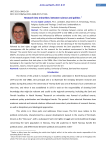
Research into minorities: between science and politics
Статья научная
The article examines the interplay between science and politics in minority research in the period 1979 to mid-1980s at the University of Tromsø. Research was influenced by different conditions at the time, such as political events and policy priorities and ideological of streams in academia. Three factors influenced the choice of theme, priorities and approaches to minority research in North Norway. The first factor was the damming of the Alta-Kautokeino river, followed by Sami rights struggle and political changes towards the Sami population in Norway. What consequences did the political case for the research for the academic environment in the Northern Norway? The second factor was the research program run by the Norwegian general scientific Research (NAVF). An analysis on the relevant themes and focus areas within minority research is undertaken on basis of the research program. Finally I will use the methodological and research political discussions on emic and etic research positions that took place in the 1980s. Was it the Sami themselves, or also the researchers belonging to the majority that had the right to pursue research on the Sami? Sources consist of internal documents, reports, research papers and oral sources from the UiT.
Бесплатно
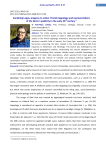
Статья научная
The article examines how the representations of the Sámi were constructed in Finnish studies on Sámi in 1920 and 1930s. The role of racial studies in the Finnish lappology remained a short-period influence, while the dominant scientific field of interest, the Finno-Ugric research, had it´s own hierarchies concerning the Sámi, implied in the multi-disciplinary field from linguistics to folkloristics and ethnology. This branch was challenged by the human anthropological or cultural geographical position, emphasizing the cultural adaptation to the environment as the guiding force formulating Sámi societies. Besides purely scientific knowledge, the article studies the extensive field of other Sámi descriptions, which spanned from travel guides to newspaper articles. It suggests that this mixture of scientific and political interests together with stereotypical representations of the Sámi forms the context for the poor reputation of lappology among the later researchers.
Бесплатно
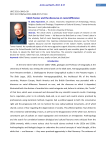
Väinö Tanner and the discourse on racial difference
Статья научная
The article charts a previously lesser-known aspect of research on the Skolt Sami by Väinö Tanner — his ideas on the Skolt Sami as a race. Tanner’s place in the scholarly field of racial theorizing and the discursive resources on which he relied are examined. One inspiring contemporaneous discourse was the Finnish hygienic discourse and the improvement of the nation’s health, towards which Tanner leaned. He reproduced aspects of the more aggressive eugenic discourse articulated by his ethnic peers, the Finland-Swedes, but the discourse on their racial superiority was unusable, given the agenda of his book, to elevate the Skolt Sami in the racial hierarchies. The economic organization of society was decisive for Tanner, rather than race, making him a Social evolutionist.
Бесплатно
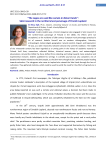
Статья научная
Anders Andelin was a Finnish clergyman who engaged in Sámi research in the northernmost parsonage of Finland in the 1850s. His efforts were not exceptional, as the residents of 19th century European rural parsonages practiced a lot of research. Andelin himself was an amateur ethnographer, historian, archaeologist, meteorologist, geographer, natural scientist, linguist, and toponymist. He was, as a Sámi researcher, between old and new scientific traditions: The middle of the nineteenth century has been regarded as a turning point in the history of academic research in Finland. Until then, researchers collected folklore, historical sources, plants, and meteorological observations. Around the 1850s the focus shifted from collecting and listing towards more analytical and experimental research. Andelin published his writings in scientific journals but also compiled a lot of detailed information related to the Sámi people, as the Sámi were thought to be a primitive people heading towards extinction. The clergymen who came to Lapland also viewed the Sámi lands through the lens of cultivation. They gathered statistics, which could be used to justify the need for the efforts of agriculture in Lapland.
Бесплатно

